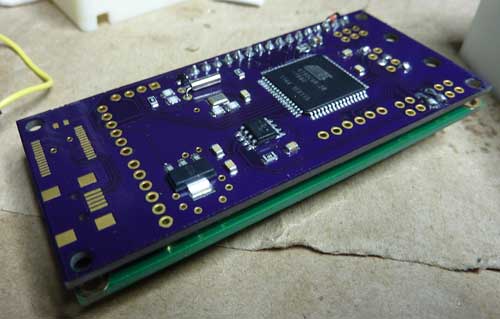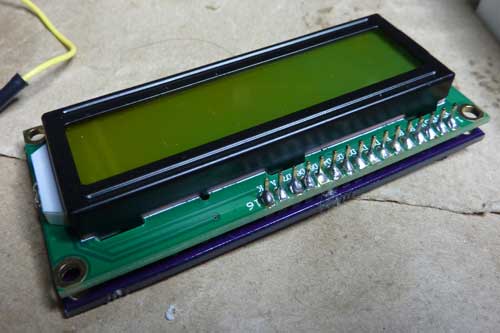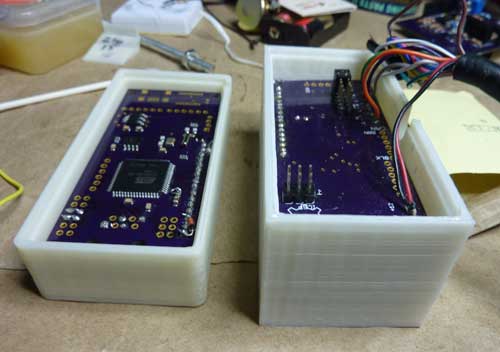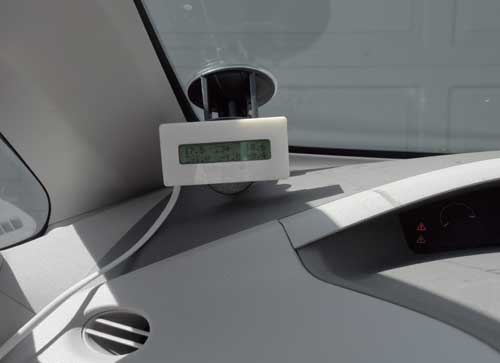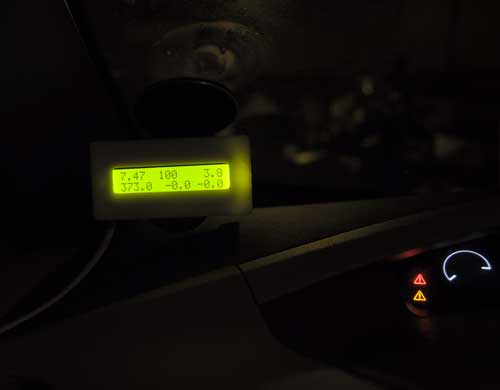Chris H built and sent me a revised board for LeafCAN. The V2 board puts all of the components on the back of the board, instead of facing the LCD. By also eliminating all of the header pins (except for the ones used to connect the LCD), the assembly becomes considerably thinner than V1:
Below are my V2 and V1 meters side-by-side. The V2 meter is on the left:
The new circuit allows software control of the backlight, so I changed the firmware to turn off the backlight 5 seconds after CAN bus activity stops, and turn it back on when the activity resumes.
I also added a new feature, which I call “fixed fuel bars.” Recently, I noticed that the 12-segment fuel bar display in the Leaf’s dash is misleading and inconsistent. Even as your battery degrades, it always displays 12 bars at 100% charge, regardless of how much energy your battery can store. Over the course of 10K miles and 1 year of driving, my range has been dropping. Lately, I’ve been caught off guard, almost running down to turtle on 2 occasions, on a 66 mile drive that used to be easy. My SOC at 100% has dropped from 270 to 255 (I never got 281, even when the car was new). Another thing is, the car often only has the range with 3 bars remaining that I used to get with 2 bars remaining. So, I decided to make a new fuel display, which directly links the SOC and “fuel.” On my fuel scale, 13 = 281 gids, and the transition from 0 -> 1 is at 24 gids, which corresponds to Very Low Battery. The number is displayed with 1 decimal point. I put the zero point at Very Low Battery, because when the charge gets this low, we really need more precision, and should be using raw SOC values. Unlike the fuel bar display in the dash, the first bar contains as much energy as the rest.
I find it more convenient to use this new fuel gauge than SOC %, because I can easily do the calculations in my head while driving. When driving, I’ll count the number of miles for it to drop by 1, and then multiply it by the remaining count. For example, saw the car goes 8.3 miles when the “fuel” drops from 11.1->10.1.” Then I estimate that I can comfortably drive 80 miles given the current driving conditions.
Worst case for me is about 5 miles per fuel point, so when I want a conservative estimate of range, and I know I’m not going to be climbing any long, steep hills, I can just multiply the fuel number * 5 to estimate range.
In the photo below, you can see I’ve rounded the corners on the new case, and the slimmer design looks nicer. Also, I’ve switched to a 4-conductor white telephone cable, which is slimmer, and thin enough to squeeze in the gap between the left dash & the body. I’m able to use only 4 conductors, because this build is hardcoded to use only the EV bus, so the only wires I need are power/ground/CANH/CANL.
The top line displays: remaining pack KWh/SOC in gids/remaining fuel
The bottom line displays: pack voltage/instantaneous amps/instantaneous power draw KW (pack voltage * amps / 1000).
As usual, the latest code is available on github, and you are welcome to modify the display code to suit your own tastes.
